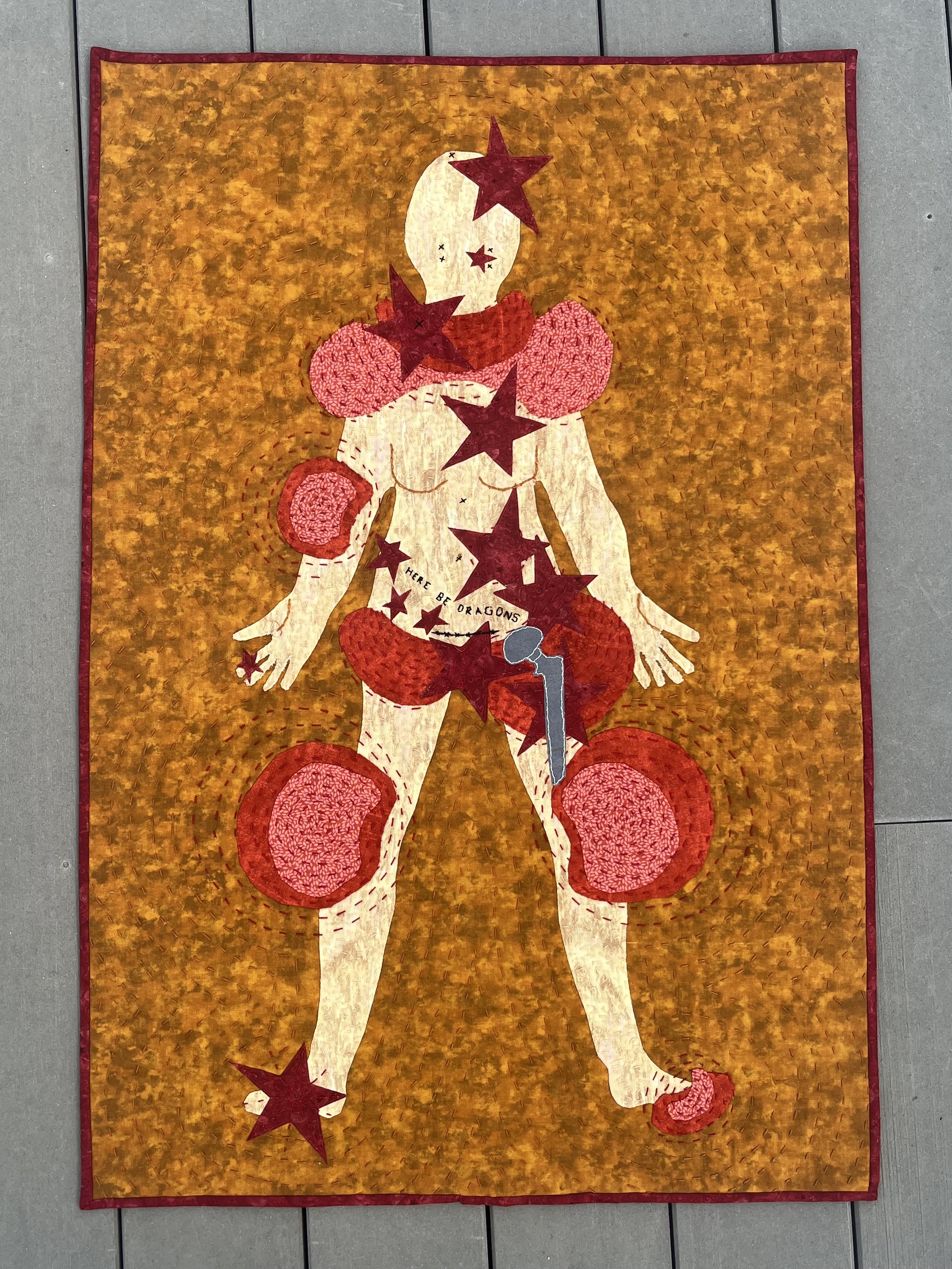Pain Map: Artist’s Statement
How do you quilt a physical sensation? Prompted by some pain issues a family member was experiencing, I have been thinking a lot about pain lately. That’s not an unusual thing for me for me to be thinking about. I have a lifelong chronic health condition that comes with joint pain, and have had a variety of other health crises throughout my life that were accompanied by a vast array of acute pains.
Pain is complex. Especially chronic pain. Sometimes the process of getting the source of the pain diagnosed and treated (or at least taken seriously) is almost worse than the pain itself.
For starters, there’s the stupid “pain scale.” You know the one: “on a scale of one to ten with one being no pain and ten being the worst pain you’ve ever had…?” The answer to this question is supposed to help a medical professional diagnose the seriousness of what you are experiencing. But it doesn’t take into account that different people have different pain thresholds, based on all sorts of biological and experiential factors. If, like me, pain of one sort or another has been a lifelong companion, it can be hard to know whether today’s discomfort is an “I should get this looked at in case it’s serious” sort of pain or an “average Tuesday” sort of pain. I have to think really hard to come up with examples of “level one” pain in my lifetime. Mostly I just carry on with life assuming that some part of me will hurt at some point during the day. When a well-meaning nurse or doctor asks me where I am on the pain scale, I have NO IDEA if my “six” in any way corresponds with what other people think a “six” represents. I think that what I experience as a “six” might flatten some people. Others might not notice it at all.
I set out to document in quilt form a lifetime of pain experience. The result is Pain Map, a 24” x 35” art quilt which, I have to say, I am very happy with!
I wanted to capture where in my body I had experienced pain that impacted me in major way (we’re not talking about paper cuts or stubbed toes!) I also wanted to distinguish between acute and chronic pain, which I did by contrasting sharp star shapes with softer “blobs. Black stitches mark where I had surgery or required stitches. My artificial hip got some bling to celebrate being the one intervention that had the biggest impact on removing pain from my life. I then hand quilted a pattern that evokes the way in which pain radiates outward.
As a companion piece to Beyond the Blue Gown, Pain Map also includes a dig at the medical system in the form of the phrase “Here be dragons” stitched across the lower abdomen. In case the reference is unfamiliar, you should know that on ancient mariners’ maps these words were often used to label an area of the world that had not been explored or charted.
In an earlier quilt, Askew, which I designed to be hung off kilter, I reflected on the significant gaps and biases in the medical knowledge about women’s bodies that result from the decades in which women were excluded from clinical trials and other forms of medical research.
Quilt by quilt, I am developing what is becoming a series of works that examine the ways that I have been impacted by medical biases and gaps in understanding of patient experience. Keep an eye out for another quilt in this series shortly!


